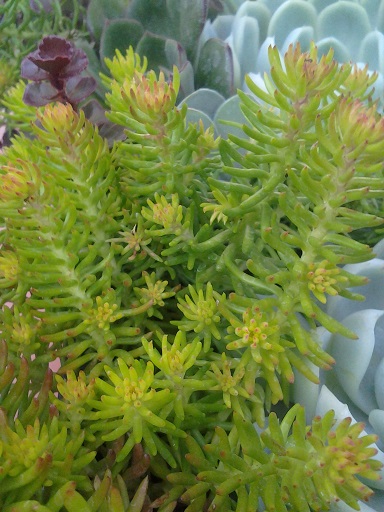UNITED STATES—Lawn is both the most common and the most horticulturally incorrect of landscape features. Not many landscapes lack lawn. After all, it is the most useful part. Yet, with few exceptions, it requires more water and maintenance than anything else, and in most situations, than everything else combined!
Other groundcover plants are not nearly so greedy. Some need only occasional attentions. Most want less water, and some need very little water or none at all once established. No other groundcover functions like lawn. However, they each have particular advantages.
Ideally, groundcover plants do more than just look good. Most cover otherwise exposed soil so that weeds or other unwanted plants do not dominate. Some groundcovers help to stabilize soil. A few even work as living mulch so that soil does not stay too harshly exposed for other plants to be comfortable in it.
Low growing shrubbery, like creeping ceanothus and some types of juniper, can get too deep and unmanageable for confined areas. They tend to work better where they have room to spread outward uninterrupted. Otherwise, the edges can get quite shabby if they need to be pruned back for confinement. Some sprawling cotoneasters tolerate pruning better, both on top and the edges.
Coarse vines, like honeysuckle, naturally stay low where they have nothing to climb, although they need occasional pruning to stay tidy and confined. High branched trees, like most types of eucalyptus, are beyond the reach of busy tendrils or twining vines. However, Algerian and English ivies, although considerably tidier and uniform, can cling directly to the trunk of any tree to become a wicked mess out of reach!
Old fashioned Hottentot fig (freeway iceplant) can be aggressive where it needs to be pruned around the edges, but is actually quite complaisant otherwise. It does not pile up too deeply because older stems decay as readily as they get overwhelmed by new growth above. Vigorous growth is an advantage for filling in quickly, and subduing weeds. ‘Real’ iceplants are smaller, more docile around the edges, and much more colorful when they bloom.
Highlight: ‘Angelina’ stonecrop Until the patent expires, unauthorized vegetative propagation (cloning) of ‘Angelina’ stonecrop, Sedum rupestre ‘Angelina’, is still illegal. However, it regularly flaunts its own unlawful proliferation wherever dislodged bits of stem can find anything to take root into. It can be just as happy to root into cracked concrete as in bare soil. Yet, it is a surprisingly complaisant small scale ground cover that cascades only several inches over stones, low retaining walls or the edges of planters.
Without getting more than four inches deep, stems root as they creep indefinitely but slowly along the ground. The bright yellowish evergreen foliage and bright yellow flowers that bloom about now contrast nicely with darker green or bronze foliage. Exposed foliage can get blushed with orange in winter. Shabby plants regenerate vigorously after getting pruned back. Pruning scraps sprinkled over bare soil and lightly mulched with finely textured compost will happily but illegally grow into more of the same. ‘Angelina’ stonecrop likes somewhat regular watering, but can survive with less.






